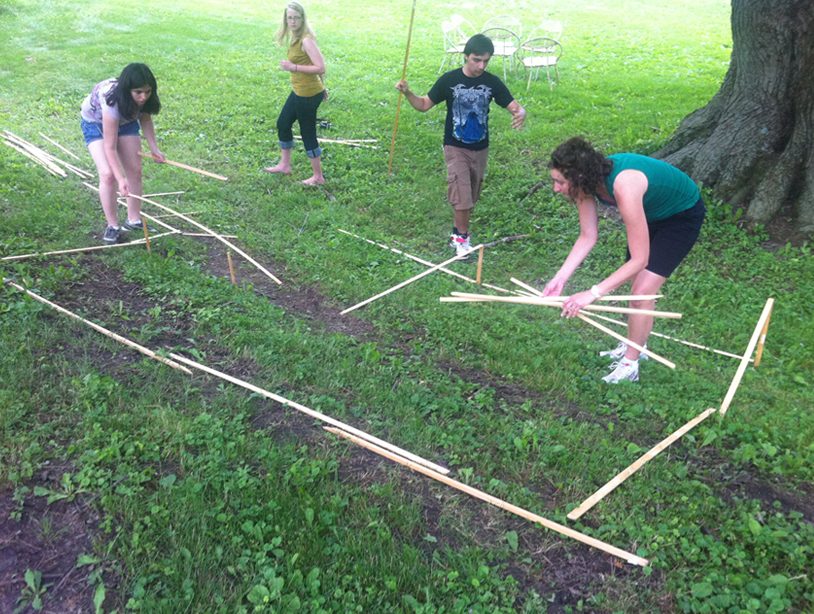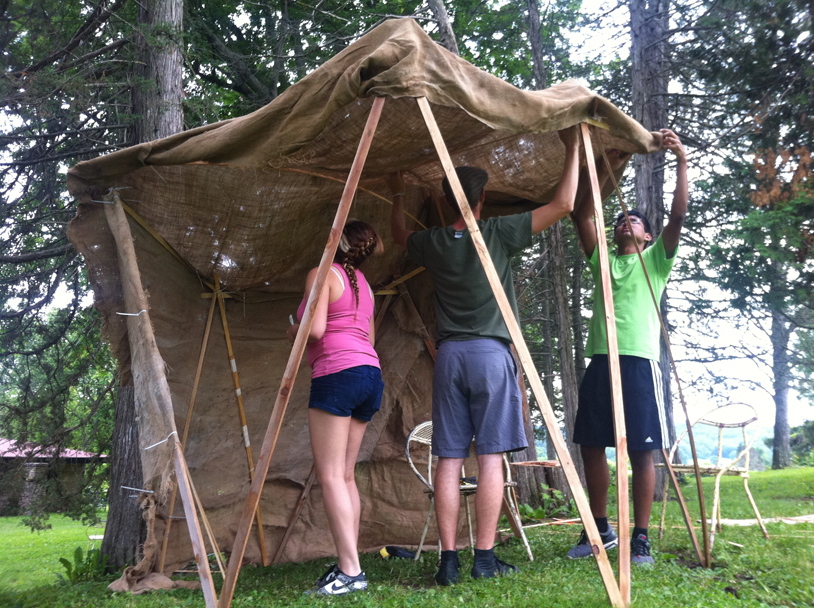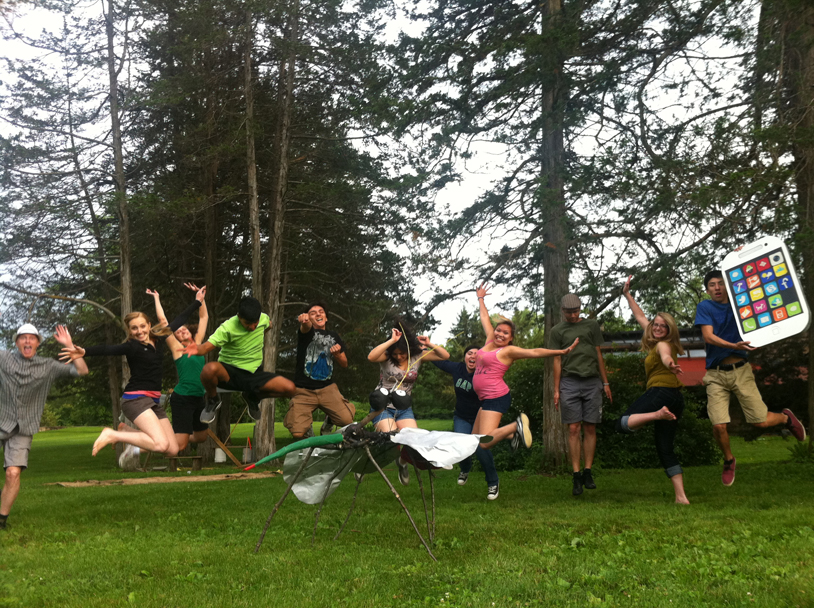
Prepare yourself to build, tear down, build, tear down, and build again, so that finally, you can have what you may call your first draft. Sound tough? You’re telling me! Thankfully, while it is challenging, it’s also one of the best experiences I’ve ever had.
During our third day at Taliesin, we were happily joined by two greatly savvy, newly-found friends, Sarah and Melanie. Something that really fascinated me about them was that while they worked in architecture firms figuring out crucial steps in many of their projects, had backgrounds that were in things like anthropology, something one would not immediately relate to architecture and design. What I found the most intriguing about this was that now, after two days of several valuable pieces of insight from heavily knowledgeable architects, we now had new wells of information, ones that viewed architecture in a directly sociological, community and behavior-focused lens. This was an immense help for our biggest task of the day, creating our first draft of the semi-permanent structure that we will make at The Frank Lloyd Wright School of Architecture.
To create our very first draft, we were split up into three teams. But wait! No paper and pencil for us. Instead, we were handed simple sticks of different lengths and asked to place them on the ground, representing a life-size scale of what the floor plan for our structure would look like, exactly on what part of the landscape we would place it in. But wait again! We were also given a time limit, giving us only a handful of minutes to organize our thoughts, forcing us to make the placing of the sticks happen in conjunction with our own train of thoughts, and may I stress that this was all of our train of thoughts at the same time. It was one, big, messy train track.
All of these rules made it seem very convoluted, and yet, what was produced from it was almost unbelievable. Instead of sitting down and thinking and discussing what our structure will look like, everyone placed sticks in the ground and moved each other’s representations for walls around and around, deciding what was appropriate depending on whether or not it feels right by actually standing within our floor plan. Not only were we able to face design problems that we would encounter in the future right in the moment of creating our floor plan, but we were also able to experience the building in person, no longer removed from the creation through an idealistic picture of what the perfect structure would look like on paper.
Melanie and Sarah were completely new eyes, and they helped wonderfully in one of the next steps. After some minutes of creating our first floor plan, we documented it, and, as scary as it was, removed all the sticks from the ground and started all over in a brand new section of the landscape. All of our previous ideas were thrown out the window and our slate was blank once again. After this second round, we all stopped and began to discuss all of our potential structures, with everyone giving their unique insight and knowledge about architecture, anthropology, and design. This was my favorite part of them all.
Through the design process, you begin by getting your inspiration, then on to your collection of ideas, and then, finally bringing out some sort of product for people to see and help you improve on. And yet, it seems sometimes the design process can be inverted just the right amount, so that all of these things happen in a sort of unison that can create a crash among a dozen complex human beings’ ideas and knowledge, with a beautiful result. By building first, and thinking through the building, with the criticisms of the structure being right in between all of the building, the entirety of our structure’s design is laid out in front of us all at once and creates a hyper sped thought process that, to me, has been one of the most titillating architectural experiences I can account for.
To wrap up, we then went into three dimensions and each team created their first draft for the structure with materials from the wonderful resource that is Taliesin. This culmination of ideas forced out of everyone their greatest discoveries from the day and led to some of the most impressive things we have done so far, a wonderful conclusion to the evening, and many bullet points to bring to the table once we build our official structure for Frank Lloyd Wright’s School.
The entire experience for me today has become something I want to keep trying to reenact in other occasions and settings, as it seems to me that this is the way the Design process should always work. Never have I had so much fun, learned so much, and managed to construct such jam-packed structures in so little time, and not only is this a time-saver, but it is also one of the greatest ways to understand someone’s views on architecture. After all, why would you tell me about your great idea for a fantastic structure when you can just go and show it to me, in a one-to-one scale model, right here, right now.
-Jeisson



Posted on June 27th, 2011 at 3:37 pm by publicworkshop in Our Work